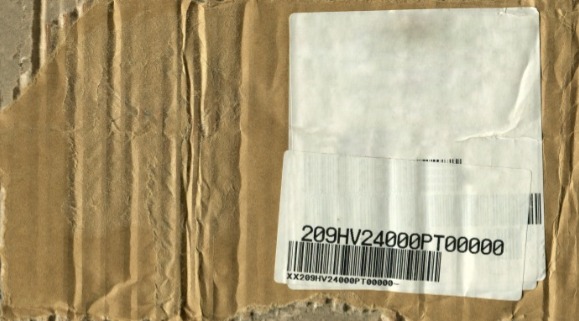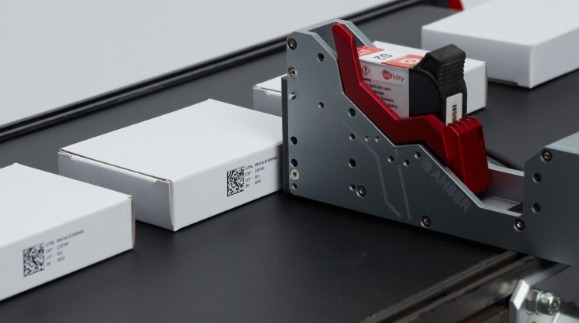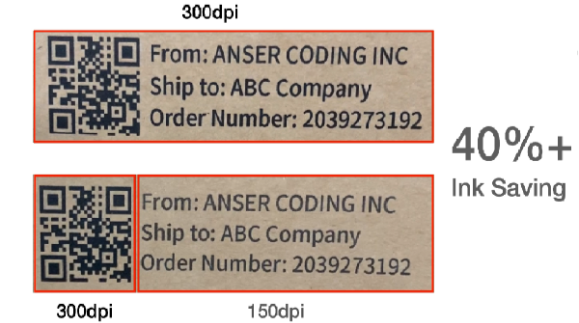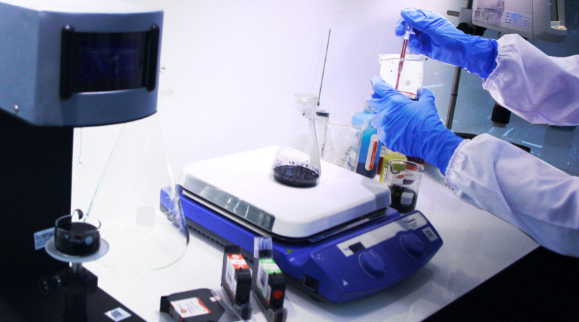How to Reduce Costs and Downtime with a Clear Barcode Printing? Starts with an Effective Printing System
A barcode with good readability saves you time and money resulted from unnecessary costs such as delays during shipment and inventory processing.

Clear barcodes play an essential role in product traceability and serialized tracking, especially in food and pharmaceutical industries. An incomplete barcode may lead to error entry, shipment delay, and profit loss. To prevent such problems and a waste of time, adopting a reliable printing system that creates durable barcodes is the key. But how to produce high-quality barcodes with good readability? There are three major factors to produce a clear barcode: Good printers, fine ink, and proper substrates.
- Good Printers: If a printer or printing system is able to print high-resolution and completed patterns with clear cuts, to create strong contrast in brightness and color, and to provide stable quality during long hours, that would be what we’re looking for.
- Fine Ink: Prints made with such ink are expected to be resistant to heat, cold, and humidity as well as to last in a variety of environment for a long period of time. Fine ink prolongs the life of barcodes and keeps readability good throughout the whole process of manufacturing, storage, and distribution.
- Proper Substrates: Such materials complement the printing effect and better reveal the information encoded in barcodes. Reflecting proper amount of light, such substrates make barcode reading a lot easier for human eyes as well as scanning machines, and thus decrease errors in data entry.
What Causes a Hard-to-read Barcode?
A hard-to-read barcode implies incomplete patterns, ambiguous lines and shapes, and blurry images. Production costs may be significantly increased because of such barcodes. To avoid such a problem, three main reasons must be taken into consideration besides skewed positioning and low sensitivity of scanners:

Low Resolution Printer
Information is encoded within a barcode in a distinct pattern of alternating markings. Insufficient contrast between the light and dark parts of this pattern will cause the reader to have difficulty differentiating between the two and cause a no-read error.

Overly Reflective Substrates
When excessive light is reflected by substrates made of shining materials, barcode reading might interfere and information can’t get through. In some countries, reflective substrates are regulated for safety or health issues in order to prevent crucial information such as lot numbers or expiration dates of food and drugs to be obscure and causing harm.

Low Color/Brightness Contrast
If the contrast between a barcode and its background are weak, patterns and substrates may be mixed together and hard to distinguish either for human eyes or scanners to process. In order to increase contrast level of color and brightness in a barcode printing, adjusting ink colors to go with substrate materials is a good way to make barcodes prominent.
In order to ensure barcode readability, some industries forbid highly reflective packaging and require that barcodes be printed on a white background to ensure high contrast. In certain countries or regional markets, this may actually be mandated by law or government regulations.
After all, for food and drug traceability, it’s critical that things like batch numbers and dates be easily read and recorded. Fortunately, you can easily address these printing errors and challenges by using higher-quality printers, better-quality inks, and solutions that are able to manage the volume at hand.
How to Produce High Quality Barcodes with ANSER X1?

ANSER X1 includes thermal inkjet(TIJ) technology and is perfect for high-resolution barcode printing. Featuring a built-in barcode database, ANSER X1 provides 1D Code128, 2D GS1 Data Matrix grade A codes, and a database of Application Identifiersrequired by healthcare and pharmaceutical industries.


Last but not least, ANSER's ink quality assurance program goes beyond original ink manufacturers’ services providing rigorous reliability tests to ensure every ink cartridge lives up to its performance specification throughout its life span, which in return gives you reliable barcode quality and less production downtime.
Exceed Your Expectations
Combining high-quality ink and high-resolution printers, ANSER X1 printing system delivers durable and clear barcode printing that is cost-saving, easy to read, and enhances manufacturing workflow. Suitable for a variety of packaging and operating environment, ANSER X1 is your optimal and reliable choice with global and industry compliance.
Other
-
12.Dec.2023
ANSER Learning Lab - Food Grade Ink









